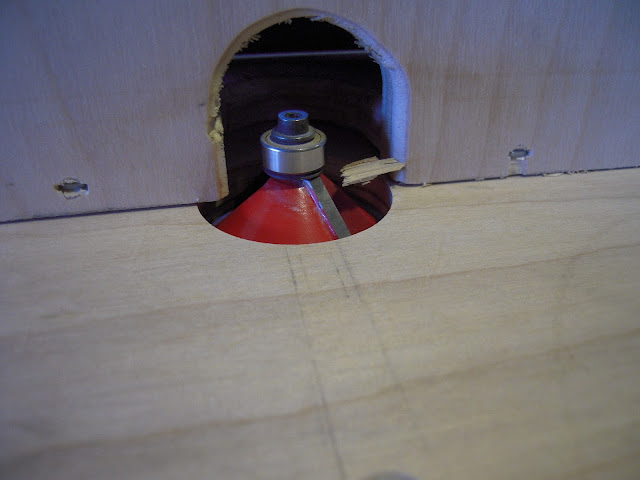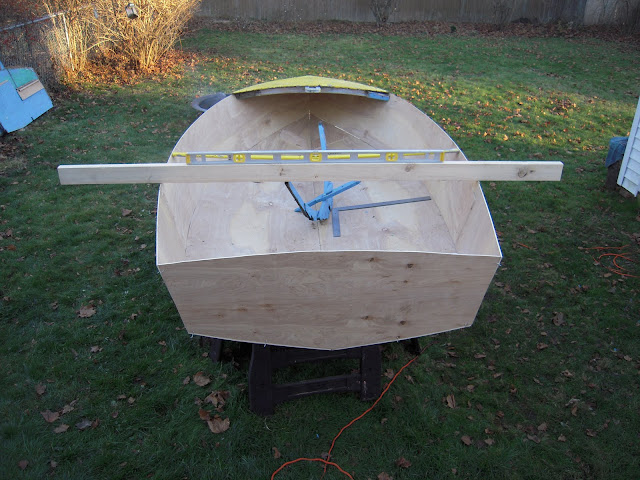 |
| Outdoor furniture undergoing cat trials |
Well I woke up Saturday morning and decided with less than a week until Christmas I better get going on a couple of my gifts. Celia has wanted a pair of Adirondack chairs for about two years and it was high time I actually built them.
I started with a set of plans my father-in-law loaned me this summer. Authentic New Yankee Workshop prints to go with all the white oak I picked up in one of the other blog post. Luckily Celia doesn't venture out into the garage when "boat" things are happening so these got built in absolute secrecy.
I began roughing out boards on the table saw, and felt new whiskers prickling out of my face as I channeled my inner Norm Abrams
The plans are simple, and there is actually a magazine article available online from the August 2005 issue of Popular Woodworking. If Steve Shansey and Norm knock out two chairs in a full day, surely I could finish two in a weekend? In the end I think I clocked a bit over 16 hours to build a set.
Also Norm doesn't tell you how many stainless steel screws you need for the build. He cops out and gives you some line like "Every man should have enough fasteners on hand for this project." Cue my masculinity dropping a peg. The answer is 50 screws per chair by the way Norm.
This was also the first project I've done in a long time where I didn't start from rough sawn lumber. It was a bit of a treat. Especially after I found this little gem:
Looks like a bit of nail/barbed wire/ bullet grew into the tree and someone hit it with their planer. I'm glad it wasn't me.
So once everything was cut to width and length I had a pile of white oak that resembled something like this at the end of day one:
Even though I ran out of the garage and met her in the driveway whenever she came looking for me I still hadn't raised any suspicion from my better half. Nothing to see here but boat stuff...
The next day started with a lot of band saw work. All the patterns were traced out in the wee hours of the morning. Once 9:00am hit I figured it was time to fire up the dust collector and let the band saw eat. There was one difficult piece that needed a 30 degree taper. I was debating how I would accomplish this for a while. I finally read that magazine article and good old Norm just tilts his bandsaw bed to match the incline of the back slats.

Since all the parts were mirror images and the two chairs were identical I only had to cut out one of everything accurately then used that as a pattern. The rest of the parts were trimmed hastily to within an 1/8" of their final shape. Here's a photo at the router table. I'd attach the one nice pattern to a blank, and using a pattern bit I could trim out copies of everything for two chairs by lunch. Then it was time to take a break to go rock climbing.
A glorious milestone. All the pieces are at their final dimension and all that's left is to chamfer edges and machining is done.
Just for the record about half way through the project I hated white oak. It's a bear to work with and splinters like crazy. Here's a cute little chip embedded in my router fence. A half dozen of his cousins were in my palms by now too.
Maybe some monotonous sanding added to my disdain for this devil material.
So by the end of the weekend all that was left was assembly. I figured chances were high Celia would see all these parts and figure out what was up. So I hid them in a hope chest down in the basement. This photo also captures some boat frames, a half dozen hand tool restoration projects, and who knows what else. Well actually my fiancé would point out that the hope chest itself is also a project.

This little lady came by to visit at some point.

Monday after work assembly began. I had a few hours when Celia was out of the house at Yoga and thought this would be a slam dunk. The rear cross member and bases go together first.
While that rested I put the legs together.
Then the front went on the base.

The legs get attached to the base with some stainless steel carriage bolts.
Around here is where I begin to panic. "Doesn't Norm Abram know yoga ends at 6:00. How am I suppose to keep a secret around here." Oh yes the old towel trick, it actually worked. Twice during assembly Celia ventured to the basement to get some odds and ends none the wiser. Must have assumed I was doing something boaty.
One neat technique I picked up to avoid splintering wood when drilling - run the bit in reverse for a quick second to score a circle then drill as usual. Makes for a nice clean hole.
No turning back now this is a chair whether I like it or not. Using some clamps and 3/4" spacer blocks really helped keep everything where I wanted it while I squared things up.
All that is left is attaching the seat slats and get this upstairs.
So at some point I had measured the stairway and wrote down "3 0". All along I was thinking I meant a 3'-0" wide door and my 30 1/2" wide chair would fit no problem. Turns out what I wrote down in fact meant 30"....

You read these stories all the time about guys building boats and furniture in their basement that they can't get out. Well now I understand. Luckily I only had minimal disassembly ahead of me. By now it was about an hour past bed time and I feared Celia thought I had lost all sanity. Remember she had no idea a furniture catastrophe is unfolding downstairs.
Now I have to put together its mate. Should be much easier without all this cloak and dagger carpentry. That's a post Christmas project.










































